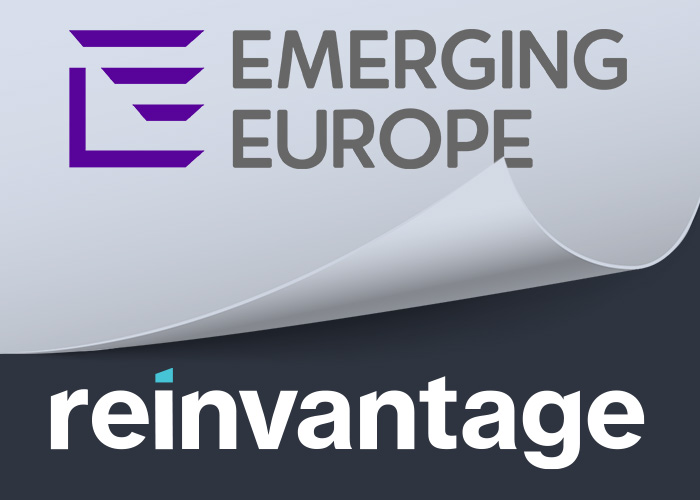That the three Baltic states are the most tech-savvy administrations in emerging Europe will come as a surprise to nobody. Less well-known is that Moldova and Ukraine are leading the charge to catch up.
If any corner of Europe exemplifies how deft governance can fuse with digital innovation, it is the Baltic states. Over the past two decades, Latvia, Lithuania, and—especially—Estonia have quietly transformed themselves into tech-savvy pioneers of e-governance, setting the pace for their neighbours elsewhere in emerging Europe.
- ‘Now is the time to invest in Moldova’
- In Ukraine, the process of digitalisation continues, even under cruise missile attack
- Keep it simple and short: The key to Estonia’s digital society
Armed with the prefect blend of public sector investment, rigorous policy frameworks, and homegrown technological talent, these three small countries have leapt ahead, fostering digital ecosystems that deliver more efficient, transparent, and citizen-friendly services.
As other states in the region—notably Ukraine and Moldova—now try to emulate their Baltic mentors, the lessons are clear: sound strategy, continuous investment, and a willingness to learn from past missteps can unlock the vast potential that digital governance promises.
An early start pays off
Of the three Baltic states, Estonia stands out as the trailblazer. Its reputation as a ‘digital republic’ is well earned.
In the late 1990s, less than a decade after regaining independence and aligning with Western institutions, Estonia’s government made a strategic decision: rather than painstakingly rebuild a legacy bureaucracy, it would harness the potential of the internet to ‘leapfrog’ into a new era. The plan was dubbed Tiger Leap.
The centrepiece of this vision was X-Road, a secure data-exchange platform that underpins all major government e-services. Today, Estonian citizens can do almost anything online—register a business in minutes, file and pay taxes in under five minutes, sign official documents digitally, or vote in national elections from anywhere in the world.
The state’s digital ID system, used by over 99 per cent of its residents, has been instrumental in streamlining administrative tasks, cutting red tape, and saving an estimated two per cent of Estonia’s GDP in time and resources each year.
Latvia and Lithuania, though initially less celebrated, have since caught up. Both have established their own secure digital foundations. Latvia’s eParaksts (e-signature) and Lithuania’s widely adopted Smart-ID system are used routinely for accessing e-services.
According to the European Commission’s 2023 Digital Economy and Society Index (DESI), all three Baltic countries score above the EU average in digital public services for businesses and citizens, with Estonia ranking among the best in Europe. Estonia’s digital brand is so robust that it attracts aspiring entrepreneurs globally through its e-Residency scheme, which has issued over 100,000 e-resident IDs from more than 170 countries since its 2014 launch.
Such initiatives show that the Baltic journey is not just one of domestic digital transformation, but also of projecting “soft power” abroad, enhancing the region’s economic dynamism and global image.
Why the Baltics lead
What explains the Baltics’ relative success? Part of the reason is historical timing. Regaining their independence amid the Soviet Union’s collapse, these nations were largely free of cumbersome legacy infrastructures.
They could start from scratch, building lean, modern digital administrations rather than overhauling outdated bureaucracies. Political will also mattered. Determined leadership at key moments ensured that digital reforms persisted beyond electoral cycles. In Estonia, for instance, the e-Estonia vision was nurtured and expanded by successive governments, ensuring continuity and mitigating policy backsliding.
Investment in human capital has been critical too. The Baltic states have long emphasised STEM education and IT literacy, resulting in a robust pipeline of skilled developers and tech entrepreneurs. Estonia’s Tiger Leap programme brought computers and internet access into schools, fostering a digitally fluent generation that demanded more efficient e-services as adults.
Similarly, Riga’s thriving IT scene and Vilnius’s start-up ecosystem owe much to stable policy support, university-industry collaboration, and an environment conducive to innovation
Beyond the Baltics: The race to catch up
Inspired by Baltic successes, other emerging European countries are racing to refine their own digital governance strategies.
Ukraine and Moldova stand out as the most ambitious, even amid challenging conditions. Indeed, Ukraine’s war with Russia has not dampened its e-governance agenda. On the contrary, the conflict has accelerated efforts to ensure that critical services remain accessible online, safe from bombardment and bureaucratic breakdowns.
Ukraine’s Diia platform, launched in 2020, has become a one-stop shop for digital interaction with the state. Citizens can use it to access over 100 public services—renew their passports, pay taxes, register a new business, or even obtain a digital driver’s licence. By 2023, over 19 million Ukrainians (nearly half the population) were using Diia, accelerating what the government calls its ‘State in a Smartphone’ strategy.
The platform’s popularity soared as the authorities introduced support packages through Diia to those affected by the war, reaffirming the notion that digital governance is not just about convenience, but also resilience.
Neighbouring Moldova has also taken inspiration from the Baltics. Seeking EU membership and eager to modernise, it has embarked on a series of reforms to digitise public administration.
Projects like MConnect—a data exchange solution similar to Estonia’s X-Road—and MPass, a unified authentication and identity management system, are boosting efficiency and trust in state services. EVO, meanwhile, is an app designed to bring Moldova’s people—and businesses—closer to public services.
The European Commission has praised Moldova’s efforts to align its digital standards with the EU, highlighting—as the Baltics have shown—that modernisation is as much about political will and regulatory alignment as it is about technology.
Scaling up across the region
As Ukraine and Moldova forge ahead, other emerging European states—from the Western Balkans to the South Caucasus—could learn from their neighbours’ experiences.
For one, building robust digital identities is crucial. Without secure, widely trusted digital IDs, e-governance initiatives remain patchy. The Baltic example shows that continuous improvement of these systems fosters trust and unlocks new services.
In Estonia, the digital ID infrastructure paved the way for online voting, which now accounts for nearly half of all ballots cast in national elections. In Ukraine, digital IDs have simplified a host of services, demonstrating how a solid identity layer can catalyse a broader digital ecosystem.
Another lesson is the importance of regional cooperation. The Baltics have benefited from sharing best practices with each other and with Nordic countries. Estonia’s groundbreaking work on cross-border data exchange projects—such as the Nordic Institute for Interoperability Solutions—has shown how digital bridges can be built between states.
Finally, it is not enough to simply deploy technology. Countries must invest in human capital and digital literacy, ensuring that citizens can navigate the brave new world of online governance.
The Baltics have, by and large, succeeded in this domain by pairing top-down initiatives with grassroots training and education programmes. Moldova and Ukraine, too, have launched digital literacy initiatives, supported by NGOs and international donors. While results will not appear overnight, the slow and steady cultivation of digital talent will pay dividends in the long run.
The road ahead
The journey towards e-governance is never truly completed. The Baltics continue to iterate on their systems, enhancing cybersecurity measures, experimenting with blockchain-based solutions, and refining user experience.
Estonia’s government, for example, has introduced e-Residency 2.0, strengthening background checks and adding new services to attract entrepreneurs. Meanwhile, Latvia and Lithuania are investing in 5G infrastructure, data analytics, and AI-driven public services to maintain their competitive edge.
For countries still finding their digital footing, the message from the Baltics is both inspiring and challenging. Digital governance offers an alluring promise: more efficient public services, greater transparency, and a state apparatus that can swiftly adapt to citizens’ needs, even in times of crisis.
However, meeting this promise demands resolute policymaking, a commitment to standards and security, sustained investment in people and technology, and a willingness to collaborate beyond borders.
Moldova and Ukraine are showing just how that can be done.
At Emerging Europe, we use an integrated approach centred around market intelligence to help organisations understand trends and strategically position themselves for success.
Learn how our solutions can help you thrive in the region:
Company and Services Overview | Strategic Advantage.


Add Comment